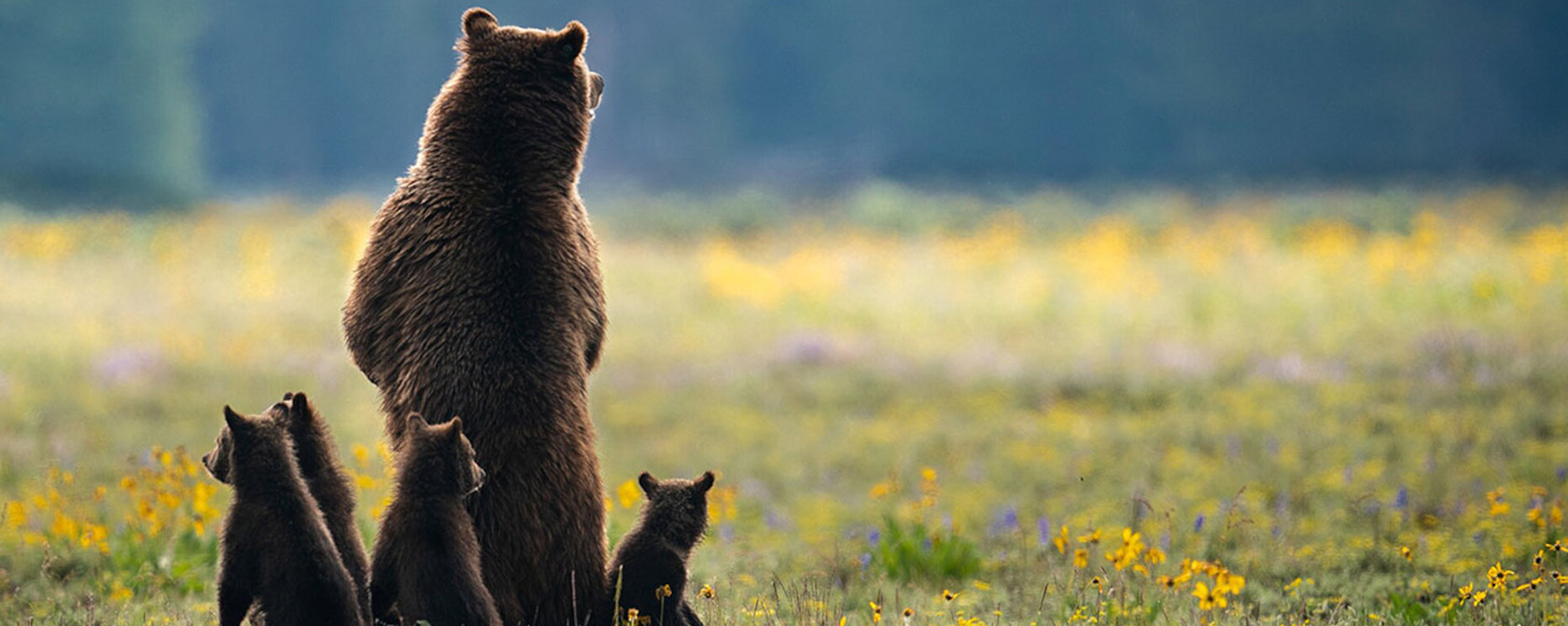By Sara Amundson and Kitty Block
After teetering on the brink of extinction, the grizzly bear population in the United States finally began to recover, thanks to the Endangered Species Act. Currently, grizzly bears are classified as “threatened” with extinction. But now that could change for some of them.
This week, the U.S. Fish and Wildlife Service determined that certain populations of grizzly bears warrant a status review. This means that the federal government will consider removing Endangered Species Act protections from these grizzly bears.
Just two years ago, the U.S. Fish and Wildlife Service itself found that grizzly bears of the lower 48 states deserved federal protection due to the tremendous threats they faced. And five years ago, the agency removed federal protections from bears in the Greater Yellowstone Ecosystem only to relist them again, thanks to successful litigation of which we were proud to be a part. The lawsuit successfully argued, among other things, that the U.S. Fish and Wildlife Service illegally separated out the Greater Yellowstone Ecosystem grizzly population despite their interdependence with other surviving populations in the U.S. and that stripping protections from the Yellowstone region bears did not account for the scientific evidence indicating the precarious genetic health of this vulnerable population.
That delisting these bears is even being considered reveals the persistent battle in this country between special interests who see wild animals as hunting targets and those who want our native wildlife protected—that is, most of us. Our 2022 poll found that 73% of Americans oppose grizzly bear trophy hunting. And a study of grizzly bear biologists in 2018 found that 74% did not believe that the grizzly bears of Greater Yellowstone are recovered.
This latest threat is traceable to the governors of Idaho, Montana and Wyoming, who petitioned the federal government to delist grizzly bears from the Endangered Species Act. Idaho’s petition was rejected, so for now the Service is conducting a status review only on grizzlies living in the Northern Continental Divide and the Greater Yellowstone ecosystems—the two largest populations in the continental U.S. If the review results in a decision to strip these bears of protections, it could become open season on them—all over again.
In 2017, when the U.S. Fish and Wildlife Service removed protections from grizzly bears in Greater Yellowstone, both Idaho and Wyoming swiftly set up trophy hunts. Disregarding the hefty contribution grizzlies make to ecotourism that stimulates the economies in local communities surrounding Glacier and Yellowstone National Parks, these governors are once again pandering to a minority constituency eager to hunt these animals.
Grizzly bears once ranged from northern Mexico to Alaska, and in the lower 48 states numbered roughly 50,000 individuals in the early 1800s. In just over a century, by the 1930s, grizzly bears were nearly wiped out. Listing the species under the Endangered Species Act in 1975 helped to bring the population back from an estimated 135 remaining bears.
With strong protection, grizzly bears have slowly begun to recover their numbers and now live in small, isolated subpopulations. Yet with fewer than 2,000 individuals in the lower 48 states, it’s critical that grizzly bears retain their Endangered Species Act protections. If they lose them, Idaho, Montana and Wyoming will move swiftly to allow trophy hunting.
We can see the pattern in what happened to Yellowstone’s wolves. After delisting, these wolves faced an unprecedented slaughter just outside the park’s boundary, setting back decades of research. Grizzly bears are even less resilient to human persecution. They have one of the slowest reproduction rates among mammals. They are not adults until they are 4 to 8 years old, the interval between litters is three to four years, and litter sizes are small. “It may take a single female 10 years to replace herself in a population,” wrote the U.S. Fish and Wildlife Service. Thus, every bear counts.
Based upon 30 years of studying grizzly bears, European biologists have found that hunting these bears causes multiple problems, including harming individual survival, the ability to reproduce and selection for bodily traits. Hunting removes the oldest and fittest animals from the population. This reduces population growth rates because older females are the most successful breeders and removing the oldest and largest males can reduce successful reproduction, too. Killing off the healthiest animals from populations leaves behind individuals with poorer genetic traits to reproduce.
Not only is this threat bad for grizzlies but it could result in a lot of human heartache, too. Grizzly bears are unaccustomed to being stalked and hunted by humans. If delisted from Endangered Species Act protections, some of the most beloved and iconic grizzlies, and the most tolerant of the presence of humans, like grizzly bear 399, would be among the first to be killed.
In a candid assessment, the former grizzly bear coordinator for the U.S. Fish and Wildlife Service called the notion of giving states the authority to “manage” grizzly bears a “clown-car of absurdities…. [I]t’s all based on their misconceptions and their crazy feelings about ‘I hate predators.’” We could hardly say it with greater precision. It’s a disgrace to pander to such hatred so that a handful of trophy hunters get the experience of bagging their first grizzlies. These bears deserve better—and we can all fight for them by telling the U.S. Fish and Wildlife Service to do the right thing by preserving their protections.
Kitty Block is CEO of the Humane Society of the United States.
